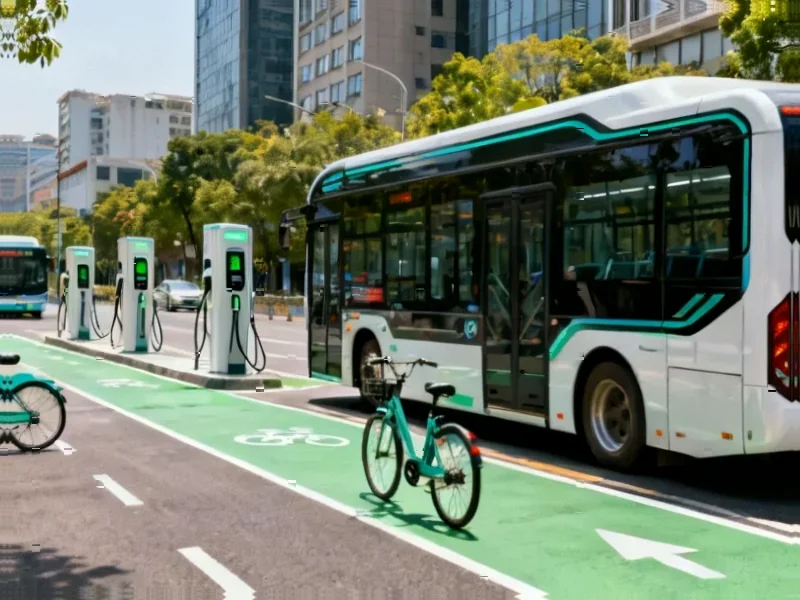According to Phys.org, University of California, Irvine scientists have developed a groundbreaking method to measure greenhouse gas emissions using radiocarbon analysis of turfgrasses. Led by Earth system science professor Claudia Czimczik and former doctoral student Cindy Yañez, the research team measured radiocarbon in managed turfgrasses across Southern California’s urban and rural regions, collaborating with Los Alamos National Laboratory’s Manvendra Dubey for atmospheric carbon dioxide measurements. The study, published in the Journal of Geophysical Research: Atmospheres, builds on earlier pandemic-era research where volunteer-collected grass samples revealed emission fluctuations during lockdown periods. By focusing on regularly mowed lawns with consistent 1-2 week growth cycles, the method provides high-resolution mapping of what researchers call “urban carbon dioxide domes,” particularly effective in Los Angeles’s mountain-basin geography where emissions become trapped. This innovative approach could fundamentally change how cities track their decarbonization progress.
The Carbon Accounting Revolution
This research represents a potential market disruption in the $50+ billion environmental monitoring industry. Traditional emissions monitoring relies on expensive sensor networks, satellite imagery, and complex atmospheric modeling that often require significant infrastructure investment. The turfgrass method offers municipalities—particularly those in developing nations or smaller cities with limited budgets—an accessible, scalable alternative. Companies specializing in environmental consulting and carbon accounting services should take note: this democratizes emissions monitoring in ways that could reshape competitive dynamics. The ability to deploy grassroots-level monitoring (literally) creates opportunities for hyperlocal environmental assessment firms to compete with established players who’ve dominated through expensive technology solutions.
Practical Implementation Hurdles
While promising, widespread adoption faces several challenges. The method’s effectiveness in Los Angeles’s unique basin geography doesn’t guarantee similar results in coastal cities with consistent wind patterns or flat urban centers. Municipalities would need to establish standardized sampling protocols and address seasonal variations in grass growth. There’s also the question of data consistency—managed lawns vary in maintenance schedules, fertilizer use, and grass species, all of which could affect radiocarbon uptake. The research team acknowledges the need for testing across diverse urban environments, suggesting this isn’t a one-size-fits-all solution yet. Cities considering implementation would need localized validation studies before relying on the data for policy decisions or compliance reporting.
Transforming Climate Policy and Compliance
The implications for climate policy are substantial. Currently, many cities rely on estimated emissions inventories that lag real-time conditions by months or years. This method could provide near-real-time feedback on policy effectiveness, allowing municipalities to course-correct quickly. For the growing carbon markets and emissions trading systems, independent verification has always been a challenge. If validated across multiple geographies, turfgrass analysis could become a low-cost verification tool. The timing coincides with increasing regulatory pressure—from California’s SB 32 to the EU’s Green Deal—creating immediate market demand for practical emissions monitoring solutions that don’t require massive capital investment.
Shifting Competitive Dynamics
The environmental technology sector should watch this space closely. Established players like Teledyne API and LI-COR Biosciences dominate the high-end monitoring equipment market, while satellite companies like Planet Labs and GHGSat offer broader geographical coverage. This grassroots approach could create opportunities for agricultural technology firms, landscape management companies, and environmental consultancies to enter the emissions monitoring space. The method’s simplicity suggests potential for citizen science applications, which could further disrupt traditional business models. Companies that can develop standardized sampling kits, establish certification protocols, or create data integration platforms stand to benefit from this emerging methodology.
Scaling and Commercialization Pathways
The research demonstrates proof-of-concept, but commercial viability depends on addressing scaling challenges. Key questions remain: Can the method achieve sufficient precision for regulatory compliance? What’s the minimum sampling density required for accurate city-wide assessment? How does cost compare to existing methods when scaled? The researchers’ pandemic-era work showed the potential for distributed sampling networks, suggesting a hybrid approach combining professional and community science elements. The most likely near-term applications will be in cities with existing climate action plans but limited monitoring budgets, particularly in the global south where traditional infrastructure costs are prohibitive. As climate accountability becomes increasingly central to urban governance, solutions like this could see rapid adoption despite their unconventional nature.




